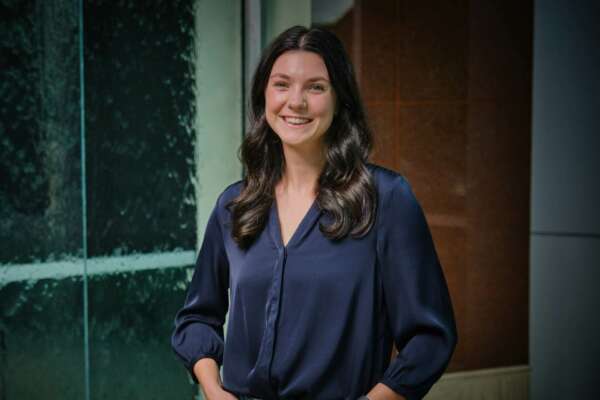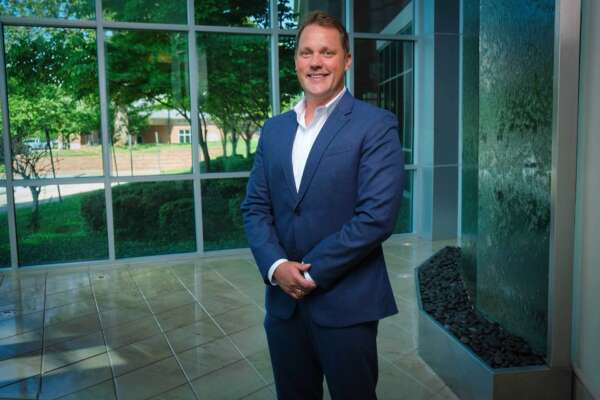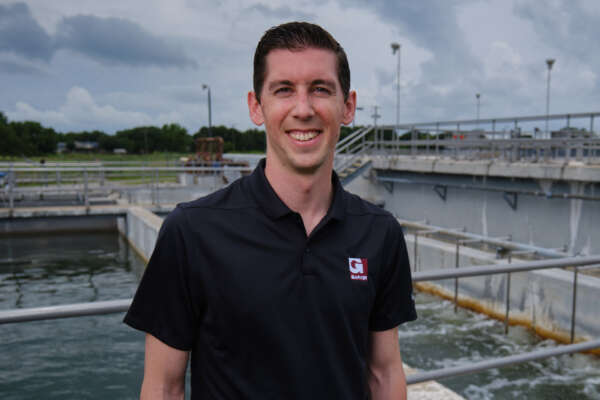Garver and NAWI collaborate to improve membrane desalination systems and fight PFAS
Garver and NAWI are conducting pilot testing and mobile test bed evaluations for emerging technologies that will address fouling challenges often associated with membranes and desalination and facilitate use of membranes for PFAS removal.
In 2022, Garver and the National Alliance for Water Innovation (NAWI) is a research program supported by the United States Department of Energy, the California Department of Water Resources, and the California State Water Resources Control Board. NAWI brings together national industry experts and academic partners to evaluate and research new methods and technologies.
NAWI has been working to advance membrane technology for greater resource recovery, researching novel treatment trains, arsenic removal methods, and ways to minimize waste while maximizing sustainability. Additionally, NAWI is conducting a side-by-side demonstration of reverse osmosis treatment train and a novel train to determine if the same water purity can be achieved without reverse osmosis.
NAWI has also been active in several notable per- and polyfluoroalkyl substances (PFAS) studies that evaluate technologies such as porous polymer networks and membranes, selective electrocatalytic destruction, and precise electrochemical dehalogenation.
Garver’s collaboration with NAWI began with the Garver-led Red Rocks Community College Pilot Test, which tested the effectiveness of electro-distillation technology. Interested in Garver’s pilot testing capabilities, NAWI started discussions about collaborating to conduct pilot tests that would collect more data on water recycling.
Developing concepts for direct potable reuse treatment
Garver developed a concept for a direct potable reuse (DPR) pilot-scale treatment system called the Mobile Test Bed for Marginal Water Filtration and submitted it to the NAWI Program at Lawrence Berkley Lab. The mobile test bed evaluates innovative technologies, such as electrochemical processes and ion-selective, hollow-fiber nanofiltration (also known as direct nanofiltration or dNF), and brackish water reverse osmosis (RO) membranes. It will process secondary municipal effluent into finished water that only needs additional disinfection to match the state-of-the-art technology for DPR treatment in Texas.
Pilot testing to improve efficiency of membrane technologies
The mobile test bed will evaluate the cost and performance of pretreatment technologies regarding RO for brackish and potable reuse. Typically, RO pretreatment includes chemically enhanced ultrafiltration (UF), which requires dosing chemical and coagulants and oxidants to remove membrane foulants and can be costly. While the RO process can be a complete barrier for PFAS, the costly UF membrane system can have little impact on PFAS concentrations - serving primarily to condition RO feed water for effective spiral wound membrane filtration.
Garver will have the capability of running two different treatment systems in the mobile test bed: 1) conventional chemical coagulation/UF/RO, and 2) electrocoagulation, dNF, and RO. The goal is to benchmark the cost of treatment for these two approaches on the same source water, while also comparing effectiveness for PFAS and other contaminant rejection.
Garver and NAWI are testing methods that could potentially decrease membrane fouling rates, reduce energy requirements, and determine the role of tested technologies under recent DPR regulations promulgated in California and Colorado.
What this pilot means for the future
This mobile test bed establishes a platform and standard procedures for comparing performance of innovative treatment trains for emerging membrane technologies. The new dNF technology has the potential to improve the consistency of dissolved metals, organics, and mineral foulants ahead of RO systems. There is mounting evidence that the novel dNF technology can reject long-chain PFAS compounds at feed pressures that are less than 33% of what might be expected for spiral wound membrane systems like conventional NF or RO. It’ll also test novel electrochemical coagulant generation processes in two configurations, atmospheric and pressurized cells.









Share this article